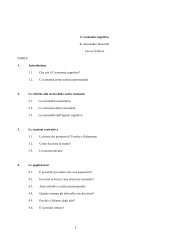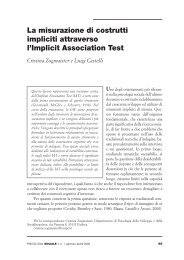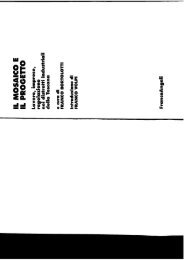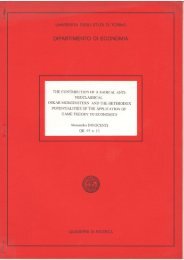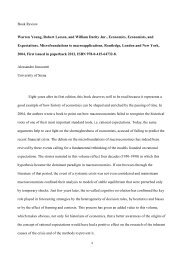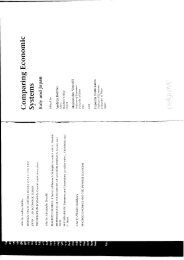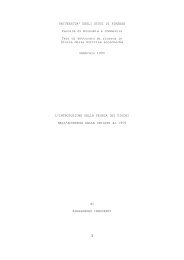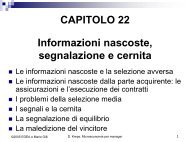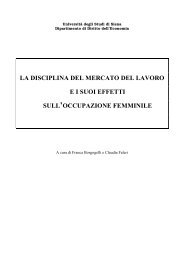Abstracts Book - LabSi
Abstracts Book - LabSi
Abstracts Book - LabSi
You also want an ePaper? Increase the reach of your titles
YUMPU automatically turns print PDFs into web optimized ePapers that Google loves.
Pablo Fajfar (Universidad de Buenos Aires and Universidad Abierta Interamericana)<br />
“Information and competition in Cournot’s model: “evidence from the laboratory””<br />
The evolutive configuration of Cournot’s model laid out by Vega-Redondo (1997) leads, in<br />
scenarios where there is greater knowledge of the opponents’ strategies, to firms’ purely imitative<br />
behaviour converging globally towards a Walrasian equilibrium rather than to a Nash-Cournot<br />
equilibrium. Experimental studies carried out by Huck, S.; Normann, H., and Oechssler, J. (1998),<br />
& (1999) validate this hypothesis on the basis that firms are not able to adjust their output in all<br />
time periods. Although it is true that at theoretical level the inertia inclusion is necessary, it is also<br />
true that, in experimental terms, it’s innocuous in order to guarantee the convergence to the Nash-<br />
Cournot Equilibrium (Huck, S.; Normann, H., & Oechssler, J. 2002). For this reason, this paper<br />
shows that, when firms can adjust output levels in every period, increased knowledge about the<br />
opponents becomes irrelevant in terms of the market’s competitive performance.<br />
INVITED LECTURE<br />
Sam Bowles (Santa Fé Institute and Università di Siena)<br />
“Social Preferences and Public Policy: Are Good Laws a Substitute for Good Citizens?”<br />
In a second best world of incomplete contracting, laws and policies designed to harness<br />
selfregarding preferences to public ends may fail. These failures occur, I will suggest, when<br />
conventional self-interest-based policies limit the effectiveness of governance processes that go<br />
beyond the usual fiat and contract approach to implementation, and that rely on informal<br />
enforcement strategies and the activation of social preferences Experimental evidence indicates that<br />
incentives that appeal to self interest may reduce the salience of other-regarding preferences and<br />
other civic motives. Historical cases suggest that for this and additional reasons, institutional<br />
crowding out occurs. The evidence for these processes is reviewed and a model illustrating the<br />
possibly counter productive nature of the conventional approach is presented.<br />
SESSION B1 – TRUST AND RECIPROCITY<br />
Maxim Frolov (Université Paris 1, Panthéon-Sorbonne, CNRS)<br />
“The experimental verification of the signal-based crowding-out effect”<br />
The paper presents the results of the experiment inspired by the article of Bénabou and Tirole, 2003<br />
who have modelled the crowding-out effect as a result of a signal on behalf of a better informed<br />
principal. As the presence of a signal effect was never controlled in experiments on crowding-out,<br />
we have decided to experimentally check the influence of this type of signal about the agent's<br />
performance on the agent's future efforts. The first period of the experiment consisted in the<br />
interaction between one employer and two agents, one agent with a high performance and the<br />
second with a low performance. The employer could choose whether the high or the low bonus for<br />
each agent, after that the agents chose their efforts. Only the employer knew the performance of the<br />
agents. In equilibrium the employer chose the high bonus the low-performance agent and vice<br />
versa. In the second period agents were asked to make the same choice knowing that the low bonus<br />
would be paid for everyone. In the third period players participated in the same roles in a gift<br />
12



